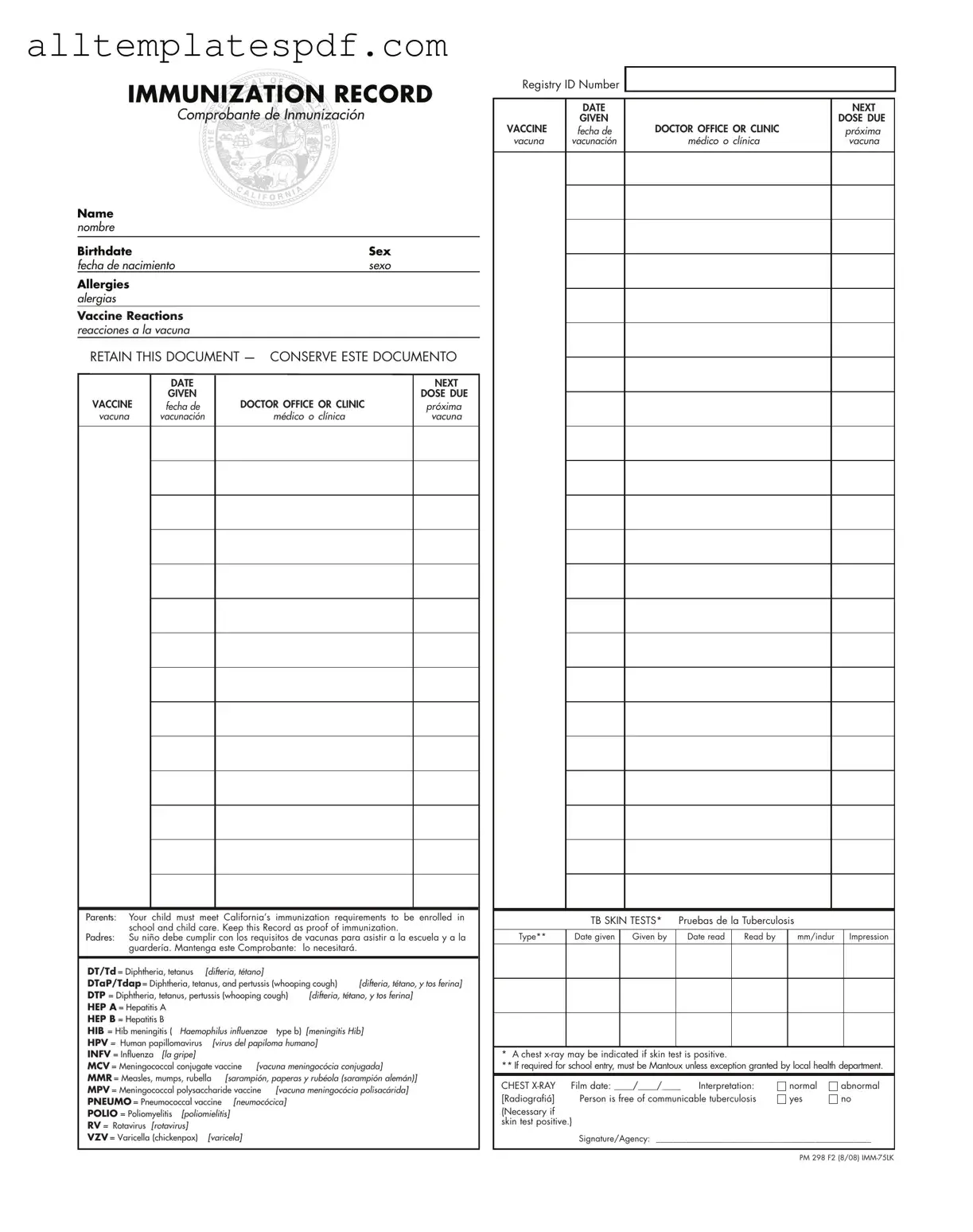Filling out the Immunization Record form accurately is crucial for ensuring compliance with school and childcare requirements. However, many people make common mistakes that can lead to complications. Here are seven mistakes to avoid.
One frequent error is neglecting to provide complete personal information. The form requires the child’s name, birthdate, and sex. Omitting any of this information can delay processing and lead to issues with enrollment. Ensure that all fields are filled out clearly and legibly.
Another mistake involves incorrectly recording vaccine dates. Parents should double-check the dates of vaccinations given. Entering the wrong date can create confusion about the child's immunization status. Always refer to the child’s medical records for accurate information.
Some individuals fail to note allergies and vaccine reactions properly. This section is essential for the child’s safety. If a child has allergies or has experienced reactions to previous vaccines, these details must be documented to inform healthcare providers of any potential risks.
Many people overlook the registry ID number. This number is crucial for tracking immunizations. Without it, the form may not be processed correctly. Be sure to include this information to avoid unnecessary complications.
Additionally, parents sometimes forget to sign the form. A signature is required to validate the document. Without it, the form may be considered incomplete, potentially impacting the child’s ability to attend school or daycare.
Another common mistake is not retaining a copy of the Immunization Record. It’s vital to keep a copy for personal records. This document serves as proof of immunization and may be needed for future school enrollments or medical visits.
Lastly, individuals may not verify the requirements specific to their state. Immunization requirements can vary by state, and it’s important to ensure that all necessary vaccines are documented. Familiarizing oneself with local regulations can prevent misunderstandings and ensure compliance.
